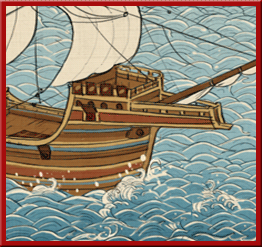Difference between revisions of "Nanban Trade Ship (TWS2 Unit)"
(Created page with " {{TWS2 Unit4|image=Image:Nanban Trade Ship TWS2.png |Class=Galleon |Recruitment Cost=1500 |Upkeep Cost=250 |Requires='''Buildings''':<li>Nanban Quarter</li> |Marines=10...") |
|||
| Line 22: | Line 22: | ||
*Powerful European ships armed with many large cannons. | *Powerful European ships armed with many large cannons. | ||
*Vulnerable to being swarmed by many Japanese ships. | *Vulnerable to being swarmed by many Japanese ships. | ||
| + | |||
| + | ==Other Information== | ||
| + | Although very expensive to recruit and maintain, The Nanban Trade Ship is extremely devastating in Naval Combat due to its massive crew complement and the devastating firepower of its European Cannons which are so effective at destroying other ships that it is not unheard of for a lone Nanban Trade Ship to single-handedly defeat a full stack fleet of Japanese Ships. Even the largest Japanese Ship, the [[Nihon_Maru_(TWS2_Unit)|Nihon Maru]], will fall quickly to a few broadsides. | ||
[[Category:TWS2 Naval Units]] | [[Category:TWS2 Naval Units]] | ||
Revision as of 20:15, 3 January 2013
Description
This European merchant ship is armed with powerful cannons as defence against pirate raids.
European or ‘nanban’ traders are the main source for cannons and matchlock firearms, along with other valuable goods, such as silk from China. Their cargo also makes them a prime target for the notorious wako pirates who haunt the Japanese coastline. For protection, trade ships are fitted with powerful European cannons, giving them some of the capabilities of a warship. If a daimyo can afford it, and is willing to trust barbarous, uncouth Europeans, he can hire these ships for his fleet, but at a very high cost. A typical “nanban” ship was the caravel, a European design with two masts and lateen-rigged sails.
Nanban means “southern barbarian”, the term used for the European merchants who traded with Japan from the 1540s onwards. Japan had little contact with outsiders, and Europeans were considered coarse and crude when measured against traditional Japanese etiquette. The nanban trade brought European weapons and goods from China, but suspicion of European motives and the influx of Christian missionaries eventually resulted in the policy of “sakoku”. In 1633 Japan became a ”locked country” and foreigners were banned from entry.
Strengths & Weaknesses
- Powerful European ships armed with many large cannons.
- Vulnerable to being swarmed by many Japanese ships.
Other Information
Although very expensive to recruit and maintain, The Nanban Trade Ship is extremely devastating in Naval Combat due to its massive crew complement and the devastating firepower of its European Cannons which are so effective at destroying other ships that it is not unheard of for a lone Nanban Trade Ship to single-handedly defeat a full stack fleet of Japanese Ships. Even the largest Japanese Ship, the Nihon Maru, will fall quickly to a few broadsides.
